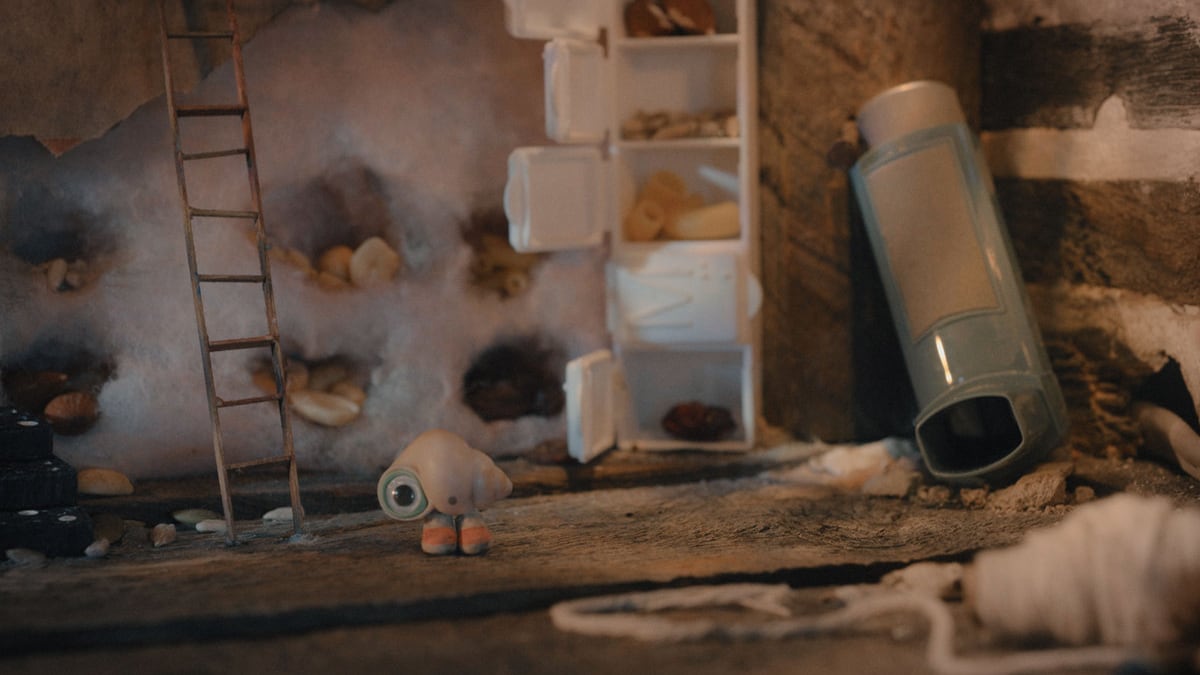Look closely at the intricacies of Marcel the Shell With Shoes On and try to figure out how the movie makes everything operate. It’s stop-motion animation, yes, but how is Marcel (Jenny Slate), our plucky little protagonist, able to roll around entirely in a tennis ball? It’s impossible to figure out. Watching Marcel feels like you’re watching magic.
As it happens, that’s because the film employed a literal magician to head up the production design. It’s Liz Toonkel, the production designer behind Marcel the Shell, who masterminded all the ways the tiny mollusk got to leap, tumble, and tip-toe his way into a variety of miniature spaces in the film.
“I had to bring a lot of my magician techniques into this,” Toonkel tells The Daily Beast over a Zoom from her studio. “Every time the blinds go up and down or Marcel jumps on a spoon and throws a berry, we had to make that all actually happen with no people there. That’s just another fun thing to think about when you watch the movie.”
Picking up where the 2010 viral YouTube video left off, A24’s new version expands Marcel’s universe into a whole Airbnb. So, really, there’s two worlds: the impersonal short-stay house, and the highly customized, intimate little home Marcel has built with his family.

But his family is long gone, and Marcel is only left with his feeble Nana Connie (Isabella Rossellini) after the traumatic separation. When the new houseguest, Dean, arrives (played by director Dean Fleischer-Camp), Marcel is ecstatic about touring him around the many rooms, gardens, and treehouses of his habitat.
Fleischer-Camp and Toonkel had to be extremely particular about the creation of these rooms, whether it’s Marcel’s breadroom, in which two slices of white bread make a mattress and comforter, or Nana Connie’s feminine makeup case. After all, shells don’t have a broad knowledge of or capability for interior design.
“Everything has to be made with your teeth or with your feet,” Toonkel says, a crucial reminder that shells don’t have hands. As the title, With Shoes On, suggests, the feet make sense. “We thought about that a lot, in terms of what they would actually be able to have and how they would’ve made it. That was a super-important part of the design process.”
Early in production, Toonkel struggled to find a way to decorate Marcel and Connie’s walls. They couldn’t have smaller versions of classic artwork—those simply don’t exist in the real world. No prints of Monet’s Water Lilies for Marcel. Instead, Toonkel landed on a postage stamp for Connie and a baseball card for little Marcel as room decor.

“These have to all be things that make sense in his scale, but are true from our world,” she explains. “It was really important to Dean—and to me—that everything in Marcel’s world was real. It wasn’t existing just to be twee or cute.”
Toonkel’s background in theater design helped, with her experience building small model versions of larger sets aiding her as she sourced itsy-bitsy items for Marcel’s home. Her favorite room to create was Nana Connie’s blush-toned bedroom. While it took her forever to find the perfect plush, pink powder puff for Connie’s bed, the end result was worth the strife.
“It felt very close to both of my grandmas,” Toonkel says. “So much of the way I hold onto my connection with them is through their stuff, especially jewelry. There was something I found really special about having her embody that kind of space.”
This attention to detail—even the exact tissue to use as Nana Connie’s sheet on her powder-puff bed required long debates—makes Marcel’s world seem so real and relatable, as fantastical as it might be.

“It was really important to Dean to preserve any natural progression of that space—all the spiderwebs, all the dust,” Toonkel says. “When we had someone come in to ready the house for shooting, we were like, ‘Don’t clean any spiderwebs! All of the stuff we normally get rid of, keep! That’s what we want.’ There was a lot of caution tape up at places, like: Don’t touch this thing.”
Even design items that would seem simple created creative headaches. The trickiest aspect of production was the couch. “Which you’d never even notice!” Toonkel teases. But Fleischer-Camp noticed, in six different couches, that the cushions were too firm. “The shells are supposed to be able to bounce around on this. It has to feel old and worn, and have grooves,” Toonkel says.
The fix? No cushions at all. To this day, the film’s director doesn’t know what was actually inside of the final couch—what kind of stuffing was used—but that’s the couch he approved. “If he somehow reads this, now he’ll know what we did,” Toonkel jokes.
Then there’s the case of that tennis ball, which Marcel uses as a “rover” to transport his diminutive self throughout the sprawling house. Before I manage to ask, Toonkel informs me that, behind the couch, the rover was the second most challenging creation to build. The first tennis ball robot (Did anyone else know these existed?) was too slow, so they built the zoomer from the ground up.
“At the end of the day, we had to get a pre-existing ball robot, and I had my friend, who’s a prop fabricator, literally cover it and make the whole thing into a tennis ball,” she says. “That tennis ball that you see on camera is not a real tennis ball. It’s totally handmade to look like one.”
Though the trick behind the tennis ball has been revealed, there are still so many illusions Marcel that remain unsolved. How did Marcel hop on the spoon to fling that berry, for example? A magician never—well, only sometimes—reveals her tricks.






